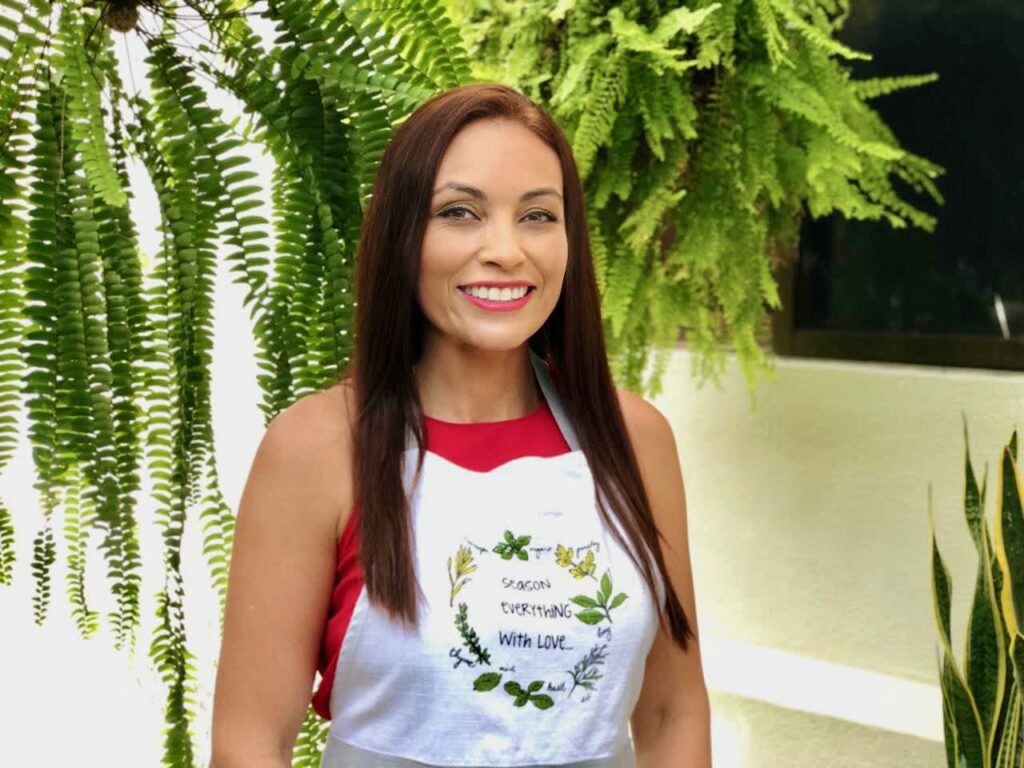For Costa Ricans, what we eat is just as important as the experience in the kitchen and at the table. We value the community that comes from cooking. Growing up, I always helped my family prepare meals and even harvested some of the ingredients.
Lunch and dinner always lasted at least an hour and were a time to discuss the events of the day. This thoughtful and collective approach to food is something I want to share with my culinary students. It’s not just about the food we eat, but the connections that happen around food.
The words that best describe Costa Rican cuisine are simple and fresh. Our diet relies heavily on staples such as fresh vegetables, fruits, grains and beans.
Here are some foods I cook and eat every day to help me feel healthier and happier in the long run.
1. Beans
Beans are an excellent source of protein, fiber, complex carbohydrates, prebiotics, vitamins and minerals, and may help reduce the risk of chronic diseases like heart disease and diabetes.
Black and red beans are the most popular and are usually served as part of a casado (a traditional dish of rice, beans, vegetables and protein) or as a bean and vegetable soup.
Chickpeas and lentils are popular here and can be used as substitutes for traditional black beans.
2. Fresh fruits and vegetables
In Costa Rica, it is common to eat fruits and vegetables fresh, not from a can or freezer. We usually buy our fruits and vegetables at local markets called verdurerias.
Some of the most common fruits in our diet include papaya, mango, banana, watermelon, pineapple and passion fruit, either eaten whole or as drinks or juices.
Costa Rican cuisine includes a wide variety of vegetables, including potatoes, carrots, tomatoes, avocados, onions, beets, yucca, and zucchini, which are eaten raw, in simple salads with lime, or chopped and boiled (such as picadillo), and sometimes mixed with animal protein for flavor.
Picadillo de Chayote is probably my favorite. Chayote is a type of squash native to Central and South America that’s not very common in the U.S. It’s green and crunchy and tastes similar to jicama.
3. Rice and corn
Grains such as rice and corn are included in our diet, but they are primarily consumed as a complement to the beans and vegetables we eat.
For example, tortillas are used to eat picadillo, also known as “gallos.” Arroz con pollo is a traditional Costa Rican dish consisting of rice, lots of chopped vegetables, and a variety of chicken meats.
This meal is very popular on special occasions such as birthdays, but is also eaten on a daily basis.
4. Coffee
Costa Rican coffee is known for being high in antioxidants, which can help reduce inflammation, and sugary drinks generally aren’t a big part of the coffee-drinking culture.
Here, coffee is drunk black or with a little milk, and like any other meal, it’s best to sip it slowly. We take our time.
We eat rice and beans, either black or red, two or three times a day. This meal for lunch is called casado. The breakfast meal is called gallo pinto, which is rice and beans mixed with onions, peppers, and cilantro, and is served with corn tortillas and coffee.
Longevity researcher and Blue Zones founder Dan Buettner believes gallo pinto is the healthiest breakfast in the world, thanks to its combination of whole grains, protein, amino acids, and antioxidants. It’s amazing how many health benefits are packed into such a simple dish.
We will share with you the recipe for Gallo Pinto so you can make it at home.
This is an example of my favorite Costa Rican breakfast: gallo pinto.
Photo: Melissa Guzman
material:
2/3 cup cooked black beans, 1 1/4 cups cooked rice, 2 tablespoons chopped onion, 2 tablespoons chopped bell pepper, 2 tablespoons chopped coriander, 1/2 teaspoon salsa lizano (optional), 1/2 teaspoon salt, 1/2 teaspoon cumin, 1/4 teaspoon pepper
procedure:
Heat a frying pan over medium-high heat and add the olive oil and heat. Add the onion, bell pepper, coriander, garlic, cumin, salt, and pepper. Sauté for 3 to 5 minutes until the onion is translucent. Stir in the beans and reduce heat to medium. Add the risano sauce, stir, and sauté for another 5 minutes. Add the rice, stir, and sauté for a few more minutes to allow the rice to infuse all the flavors.
The reason we live longer, healthier, and happier lives in Costa Rica, in my opinion, is something simple: meals made with fresh ingredients, prepared with care, intentionally enjoyed, and shared with those we love.
Melissa Guzman is a Costa Rican cookbook author and author of “Living longer, healthier and happier: recipes from Costa Rica.” She also teaches Costa Rican cooking classes in her home and shares her passion for food and Costa Rica. Follow Melissa on Instagram @recipesfromcostarica
Here is my website, please link to it in your bio.
Melissa Guzman is a cookbook author and culinary teacher from Llano Grande, Costa Rica. She is the author of Living Longer, Healthier, and Happier: Recipes from Costa Rica. Follow her on Instagram at @recipesfromcostarica.
Want to be a confident communicator? Take CNBC’s new online course, “Becoming an Effective Communicator: Mastering Public Speaking.” We’ll teach you how to speak clearly and confidently, ease your nerves, what to say and what not to say, and body language techniques to make a great first impression. Sign up now and use code EARLYBIRD to receive an introductory discount of 30% off through July 10, 2024.


